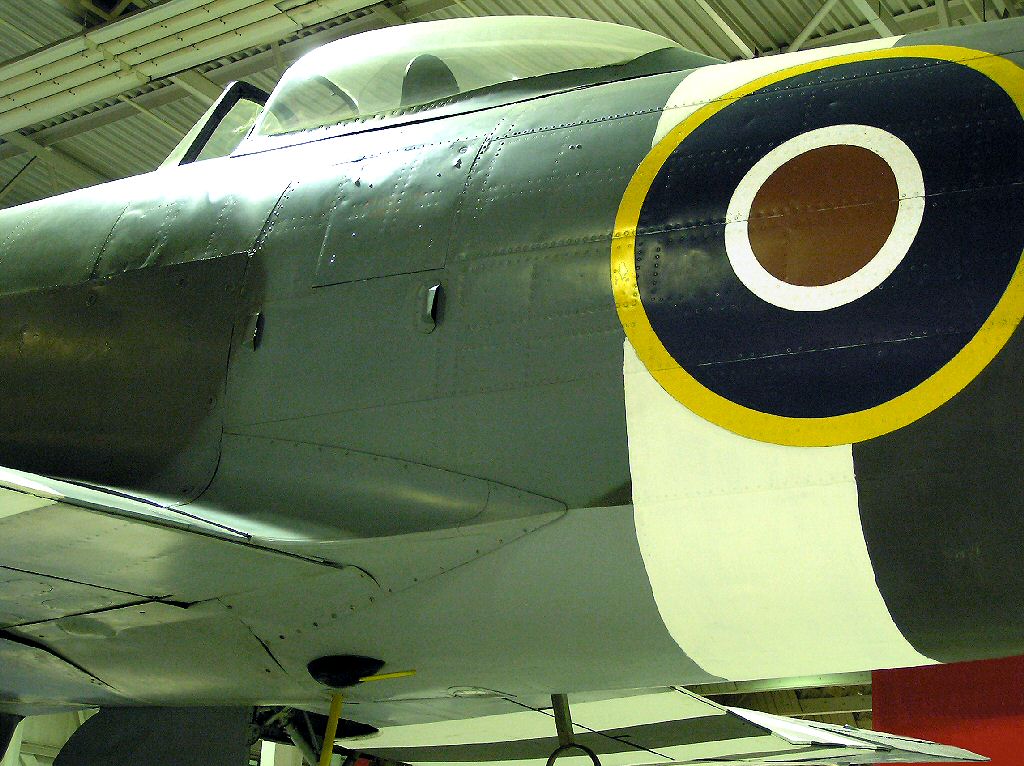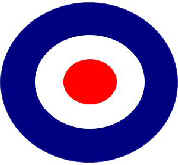|
Hawker Wallpaper - Free Computer Wallpaper |
||||||||
| Home | Sopwith | Hawker | Sopwith Aircraft | Hawker Aircraft | Sopwith Wallpaper | Hawker Wallpaper | ||
|
|
||||||||
|
How to download the photographic
computer wallpaper
Royal Air Force Hawker Typhoon Fighter Bomber Tank
Buster
It was originally designed as a replacement for the aging Hawker Hurricane. It was the first 400mph (640km/h) fighter in the Royal Air Force. The Hawker Typhoon or ‘Tiffy’, nearly did not make it into production. The British Air Ministry issued guidance in Specification F.18/37 that it wanted a big powerful fighter aircraft. The untried Vulture and Sabre engines were used for the prototypes rather than the trusted Griffon and Centaurus engines. Development of the Typhoon was held back six months because of the urgent need for Hurricane Fighters for the Battle of Britain.
The first flight of the Typhoon was in February 1940 Production of the Hawker designed Typhoon was awarded to the Gloster Aircraft Company on 27th May 1941. RAF Duxford Squadrons Nos 56 and 609 were the first ones issued with this new big monster of a fighter. The Saber engine had a poor rate of climb and performance at height was very disappointing. The engine was unreliable and the most disturbing characteristic of the plan was that the rear fuselage kept on coming apart. There was a lot of talk about scrapping the program but luckily for the Allies the problems were gradually ironed out.
The Typhoon demonstrated that it could now catch and destroy the fastest Luftwaffe fighter bombers. It became the weapon of choice for the new phase of the war. The Allies were now taking the war to the Germans in Mainland Europe. In 1943 squadrons of Typhoons were sent over to Northern France, Belgium and Holland with instructions to blast and shoot up any military target that moved. Tanks, trains, military supply convoys, gun emplacements, airfields and boats were all targeted by Hawker Typhoons.
Its Armament was 12 0.303in Browning machine guns in the Hawker Typhoon Mark 1A and four 20mm Hispano cannon in outer wings and racks for eight rockets or two 500lb or later 1,000lb bomb. Post D-Day they operated from rough forward airstrips and provided ground support for the advancing infantry. They sent hundreds and thousands of rockets, cannon shells and bombs into German ground Forces. The Typhoon is credited in knocking out 175 tanks in one day in the Falaise Gap during the break out from the D-Day Beachhead.
Over 3,330 Typhoons were produced. Gloster Aircraft Co built 3,315. The final delivery of the last batch of Hawker Typhoons to the RAF was in November 1945. The early Typhoons had a heavy metal framed cockpit hood and a car type door on each side. The later 3,000 had a sliding clear bubble hood canopy for greater visibility. It had a maximum speed of 412mph and an initial climb rate of 3,000 feet per minute. It had a service ceiling of 35,000ft and a range with bombs of 510 miles. If drop tanks were fitted it had a range of 980 miles. With the end of World War Two the need for a specialised ground attack role ended and there was no longer a need for the Typhoon. It was withdrawn from Squadron service.
|
|
| < | ||||||||
| Home | Sopwith | Hawker | Sopwith Aircraft | Hawker Aircraft | Sopwith Wallpaper | Hawker Wallpaper | ||
|
|
||||||||

 The Hawker Typhoon is best remembered for the contribution it made during Operation Overlord the invasion of France on the D-Day Beaches of Normandy. During the build up squadrons of Typhoons would fly low level missions attack and destroy over France shooting at trains, German tank and amoured vehicles. They would strafe supply shipments and do anything they could to disrupt enemy movement on the land or water. After the allied troops had landed the Typhoons ran flying standing patrols over the battle zone known as "cab ranks", awaiting a call from ground forces for an immediate strike against German targets.
The Hawker Typhoon is best remembered for the contribution it made during Operation Overlord the invasion of France on the D-Day Beaches of Normandy. During the build up squadrons of Typhoons would fly low level missions attack and destroy over France shooting at trains, German tank and amoured vehicles. They would strafe supply shipments and do anything they could to disrupt enemy movement on the land or water. After the allied troops had landed the Typhoons ran flying standing patrols over the battle zone known as "cab ranks", awaiting a call from ground forces for an immediate strike against German targets.